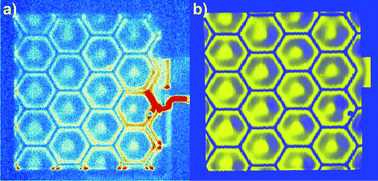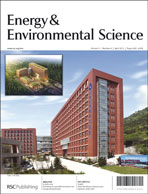Investigation of the degradation mechanisms of a variety of organic photovoltaic devices by combination of imaging techniques—the ISOS-3 inter-laboratory collaboration†
Abstract
The investigation of degradation of seven distinct sets (with a number of individual cells of n ≥ 12) of state of the art organic photovoltaic devices prepared by leading research laboratories with a combination of imaging methods is reported. All devices have been shipped to and degraded at Risø DTU up to 1830 hours in accordance with established ISOS-3 protocols under defined illumination conditions. Imaging of device function at different stages of degradation was performed by laser-beam induced current (LBIC) scanning; luminescence imaging, specifically photoluminescence (PLI) and electroluminescence (ELI); as well as by lock-in


 Please wait while we load your content...
Please wait while we load your content...